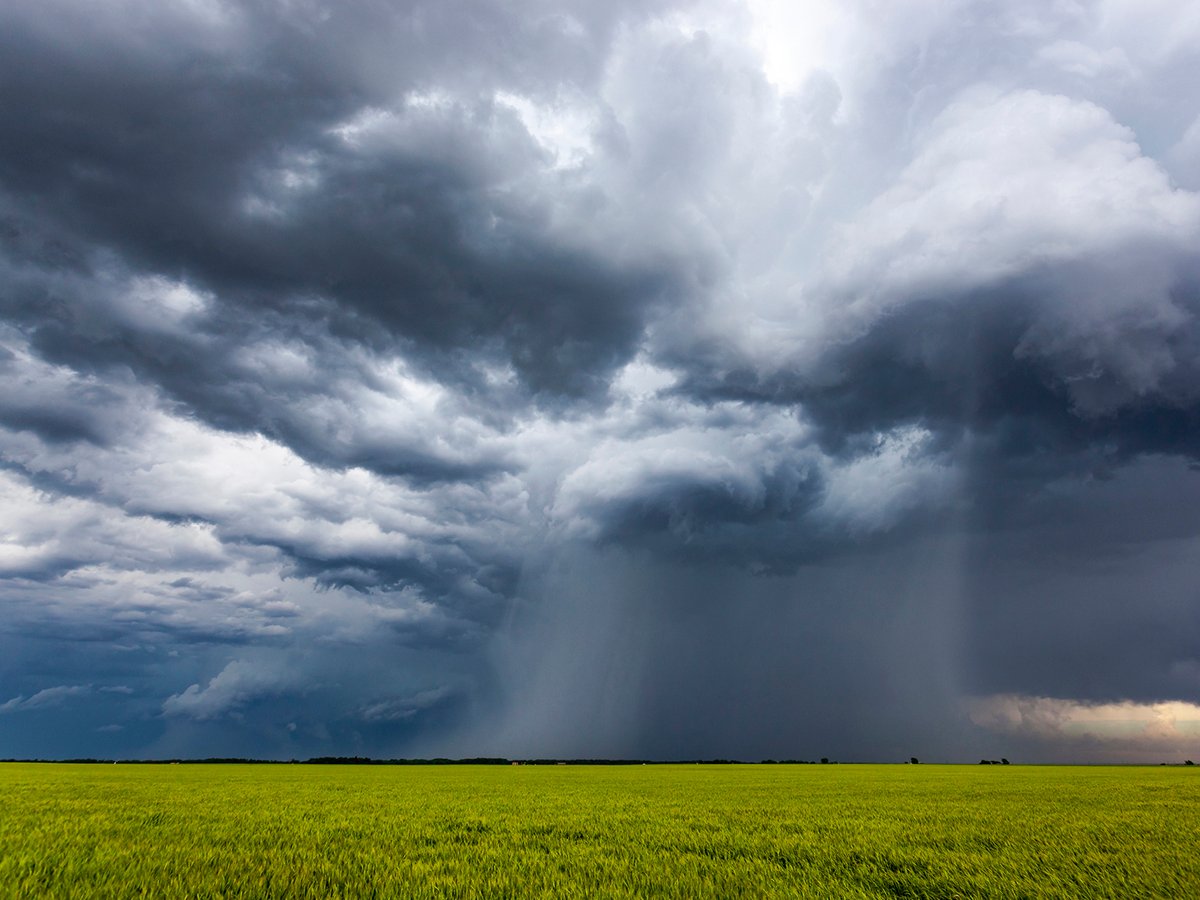NORQUAY, Sask. – Driving through the alleys between Greg Hudye’s fields of canola in east-central Saskatchewan, the truck scrapes its side-view mirrors across the tops of yellow flowers.
In another field down the road, a doe can be seen only when leaping through the densely lush fields.
“If I stood them up, they would be taller,” Hudye said of many stands that have started to lodge in recent winds and rain. “Those in pod fared worse than those in flower.”
While Hudye’s success so far may be partially credited to his high input crop management style, other farmers in the area are experiencing similar scenarios, with thick stands of alfalfa and wheat blanketing the green countryside.
Read Also

Extreme rain increases as planet warms
In this issue, we are going to wrap up our look at extreme rainfall by examining the different weather patterns that tend to be associated with these rainfall events.
“People have got smiles on their faces,” he said of area farmers.
Hudye expects his intensively managed canola to yield up to 75 bushels an acre, while his wheat could produce 120 bu.
The crops are progressing on schedule, he said, noting that by July 20 they had received 1,100 heat units of the 1,600 required.
“We need three more weeks of normal weather and we have our crop,” he said. “Everybody has just got their fingers crossed because they need this crop.”
Crops were far from normal last year, after a widespread frost Aug. 20 substantially reduced yields and downgraded quality.
This year, the weather has been kinder to farmers, producing regular rains and heat.
Despite heavy downpours reported in east-central Saskatchewan, moisture levels around Norquay are generally just shy of the 18 millimetres a week needed on Hudye’s farm from May to August.
He said farms in the area practice continuous cropping to take advantage of the good moisture most years.
The Hudye family farms 14,000 acres of wheat, canola and forage corn, and also maintains pastures for buffalo and elk herds.
They use their land to test how well a host of inputs, soil amendments, sprays and fertilizers work in the area for their other business, Hudye Soil Services.
For the Hudyes, a target of 350 healthy seeds per sq. metre at seeding normally translates into 600 heads at harvest. They are hoping to get $300 an acre from their InVigour 50-20 and Advanta 95-25 canola fields this year.
And the upbeat outlook reaches beyond the Hudye operation. Volunteer crop reporters that phone in weekly observations to Saskatchewan Agriculture are equally upbeat about this year’s crop potential.
“It’s the best crop we’ve seen in a long time,” said Paul Johnson, manager of the policy branch, referring to the overall Saskatchewan picture.
“Our crop reporters are very optimistic things are looking good.”
Good heat in mid-July brought crops along, while regular rains also helped maintain moisture reserves.
Norquay escaped hail and severe storms that brought plow winds and localized flooding to other areas of Saskatchewan.
Johnson said most crops are developing normally and many producers are completing their haying.
Hay yields are 60 percent above the 10-year average, especially in the east-central region where yields of two tonnes an acre are reported.
Bare patches are evident in crops from excess moisture in the area this spring, with recent rains creating more puddling, said Zane Lewchuk, crop development specialist with Saskatchewan Agriculture in Yorkton.
He said most crops are far enough along that they can soak up 25-75 mm rainfalls.
“It’s not that bad a problem to have compared to drought,” said Lewchuk.
Meanwhile, good rainfall in Alberta has helped increase the yield potential of most crops. Plants in south-central areas are recovering well from excess moisture early in the growing season.
The recovery is more difficult for a soggy Manitoba. Farmers in areas like the Interlake and southeast will likely turn crops into greenfeed to compensate for anticipated shortages in hay this year.
Hay quality and yield are poor to average in most areas of Manitoba, with continuing rains slowing haying operations.














